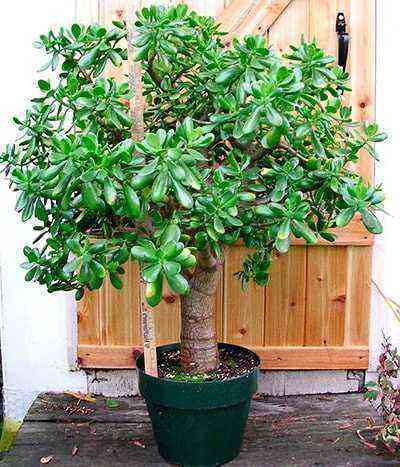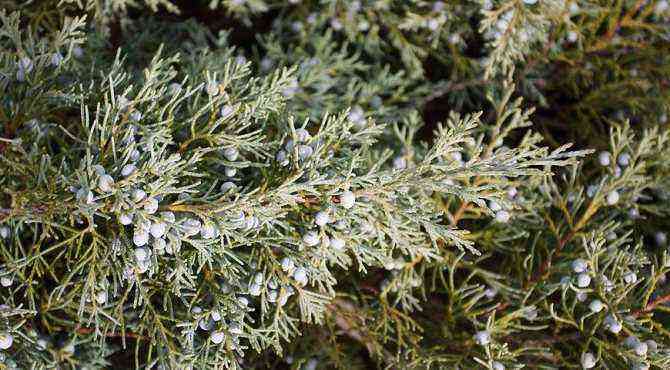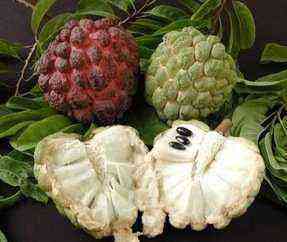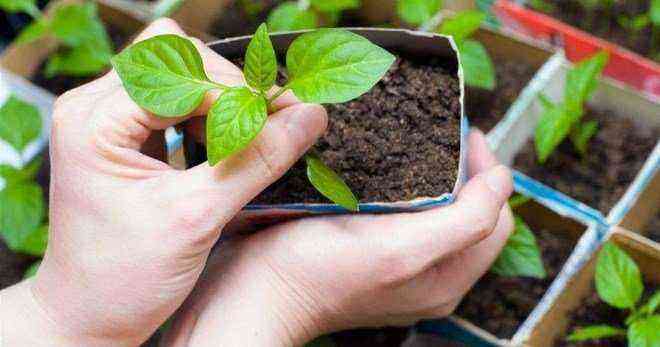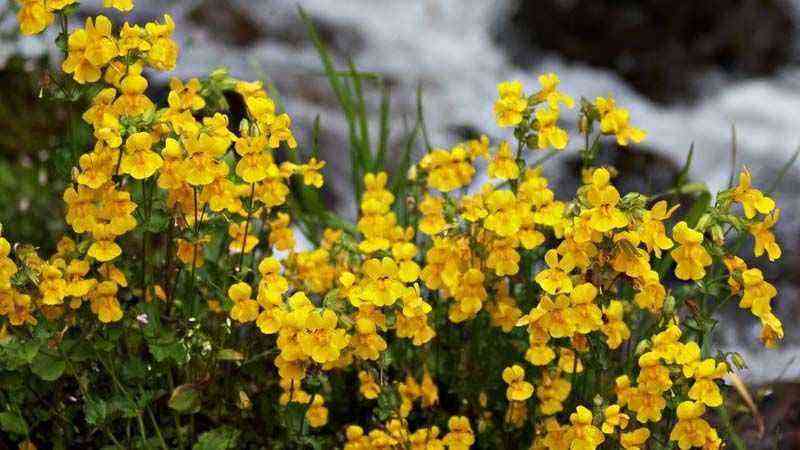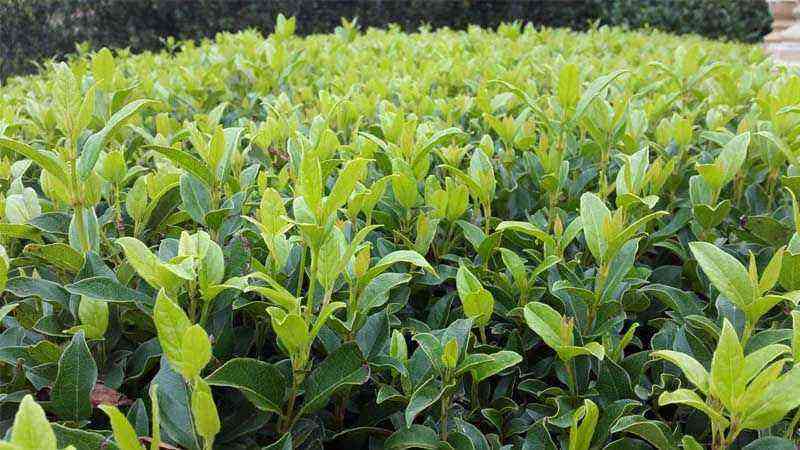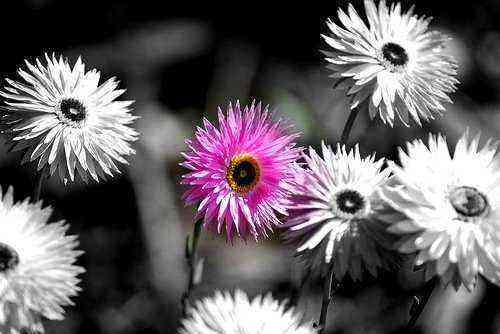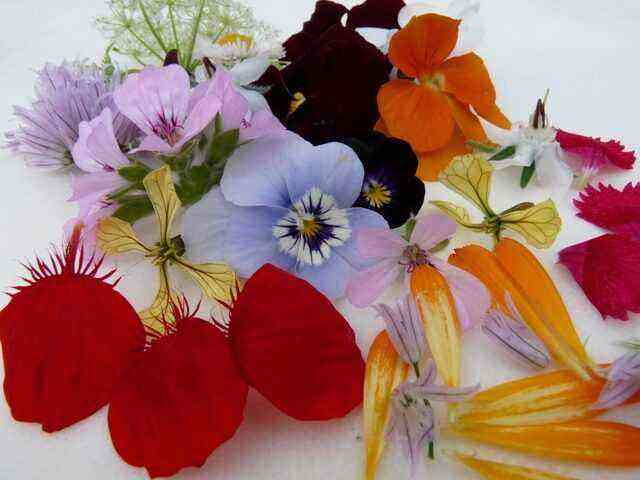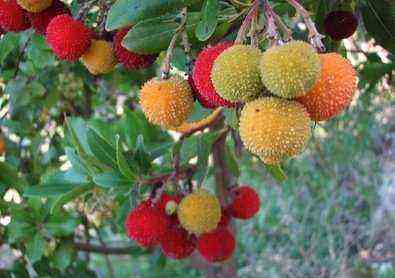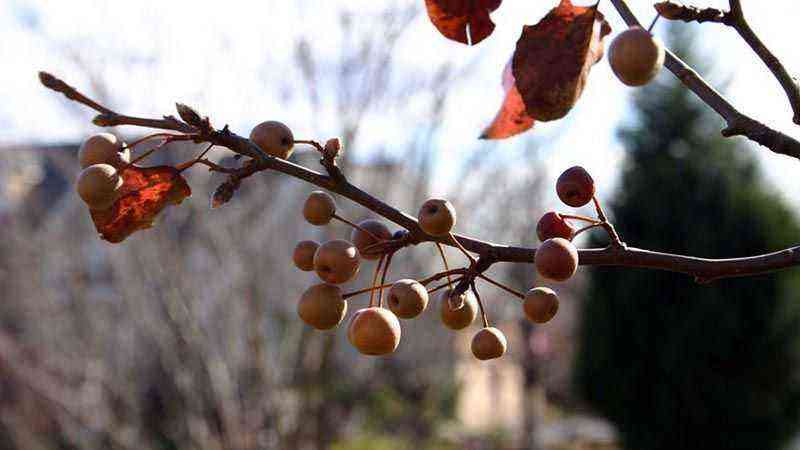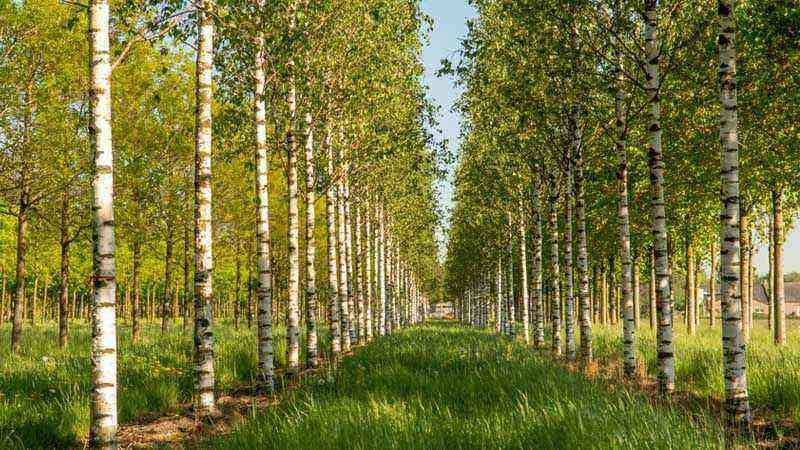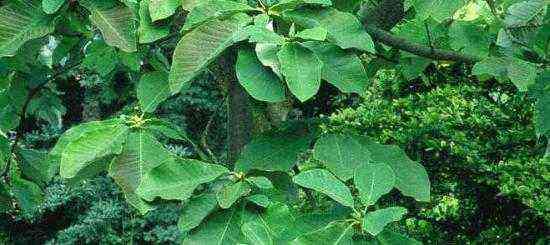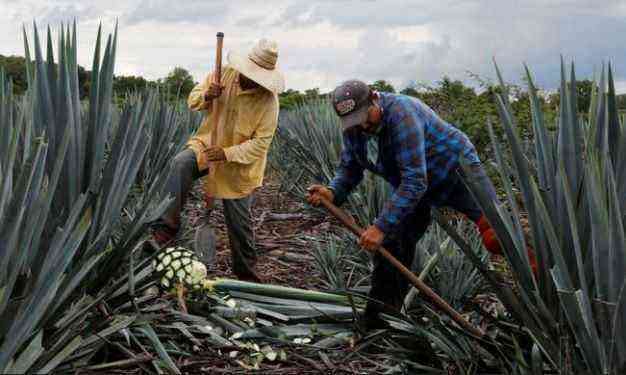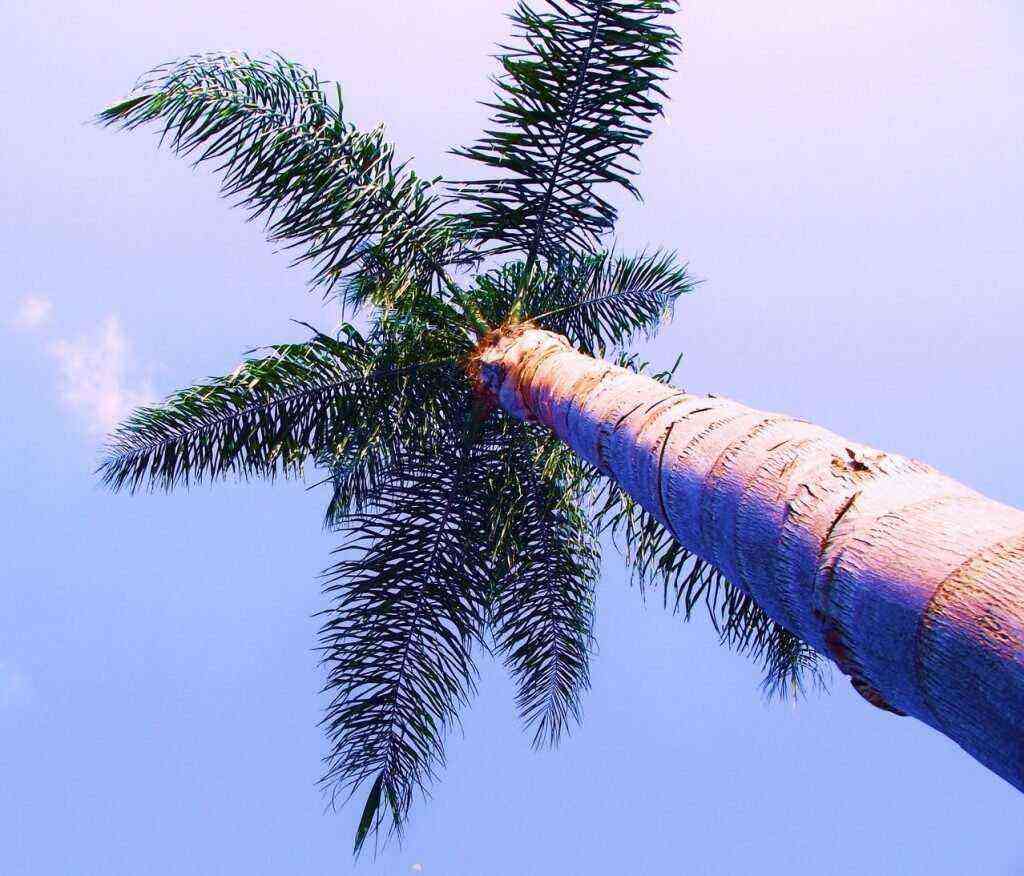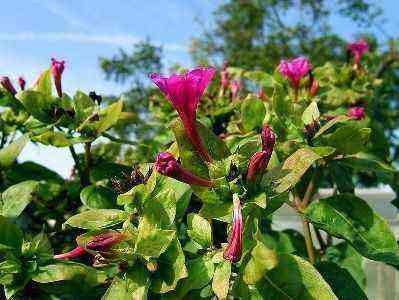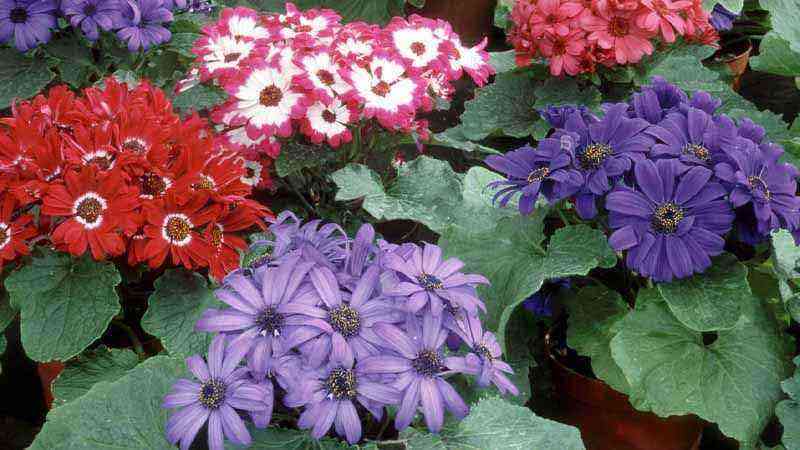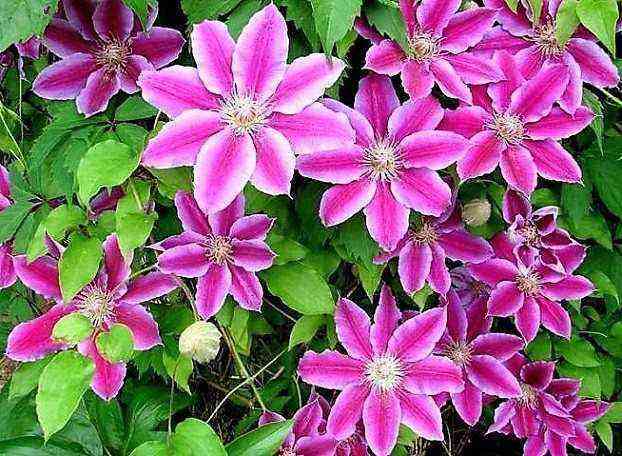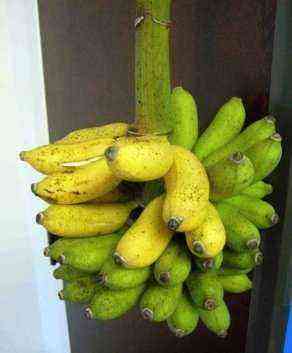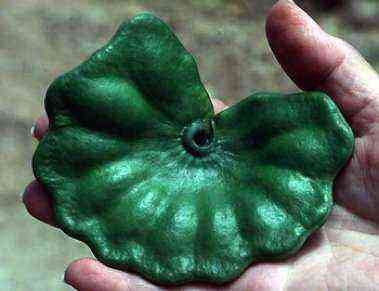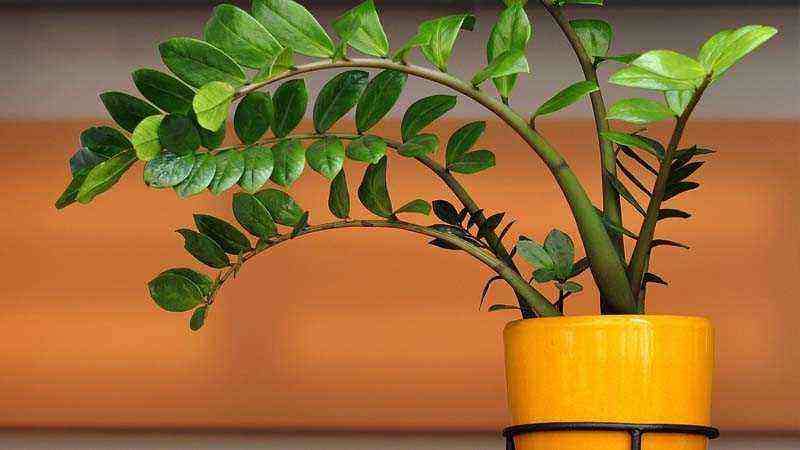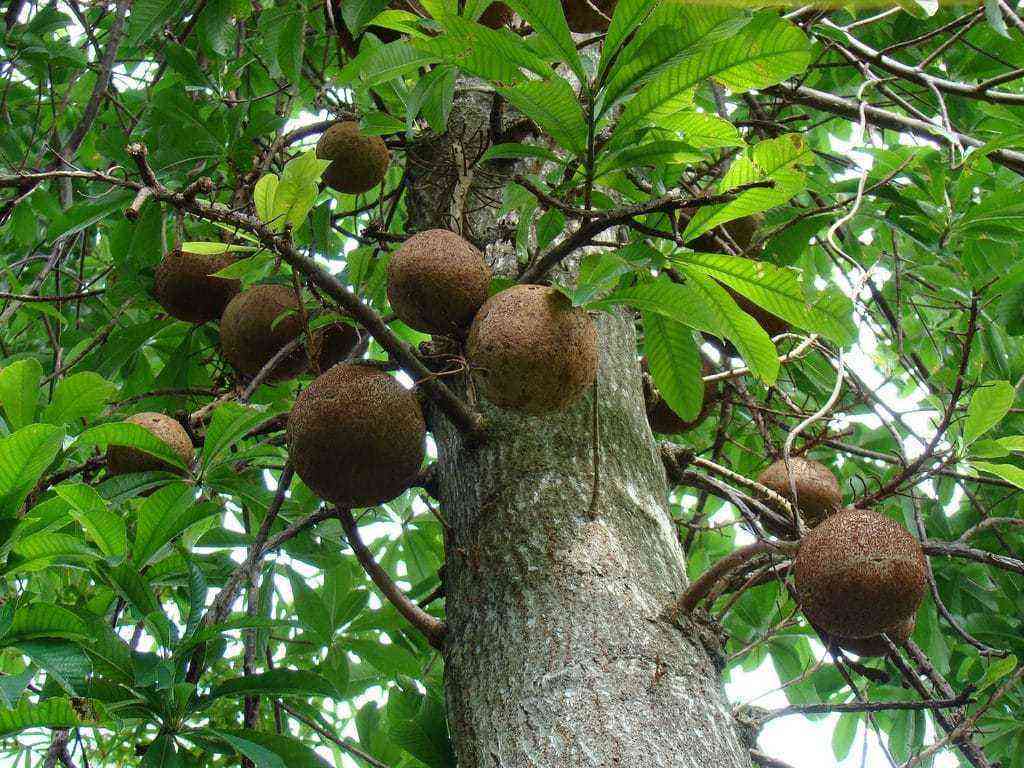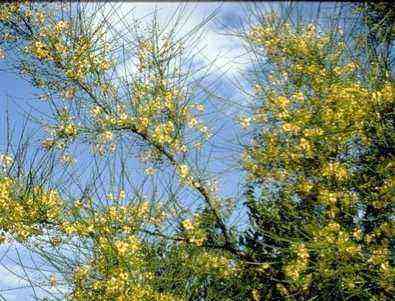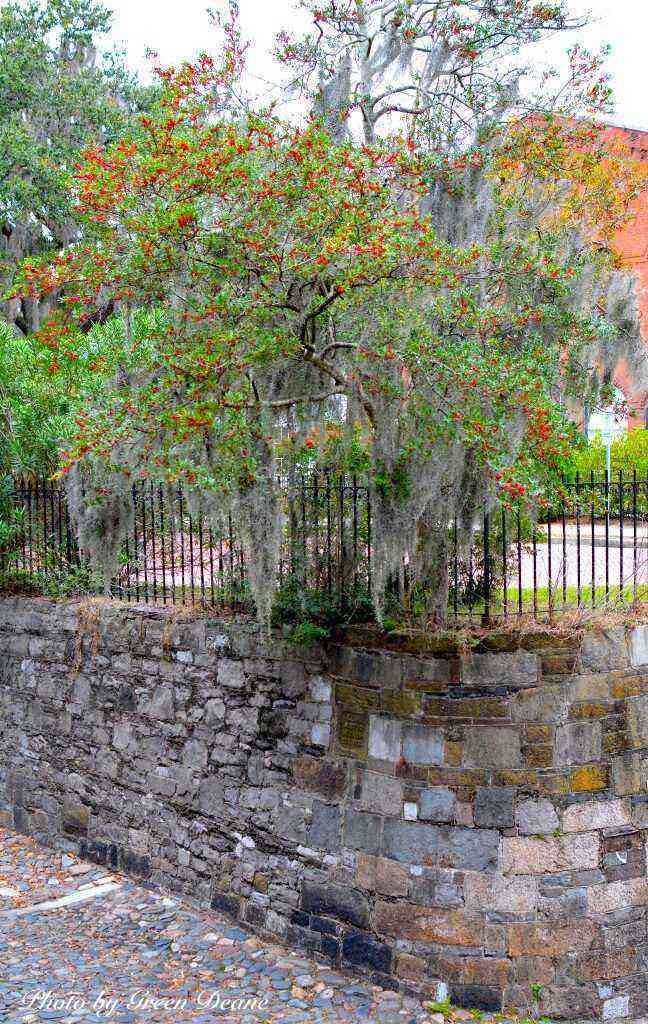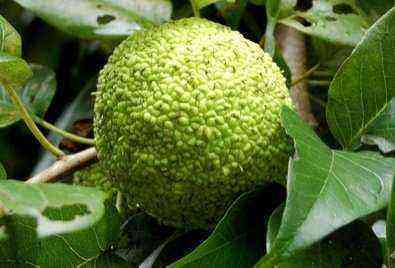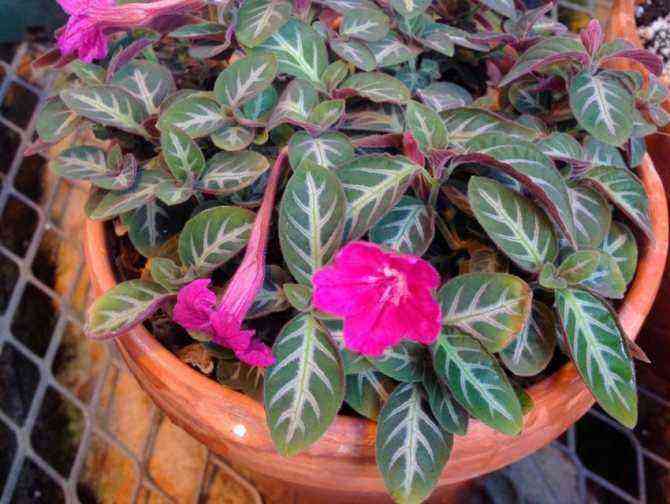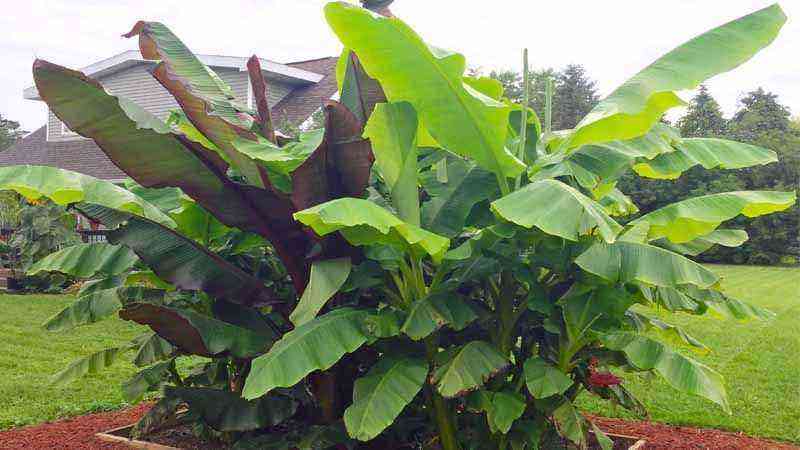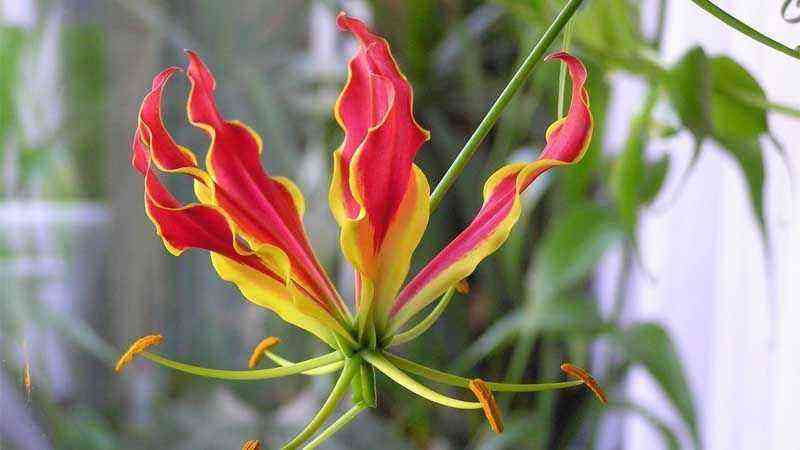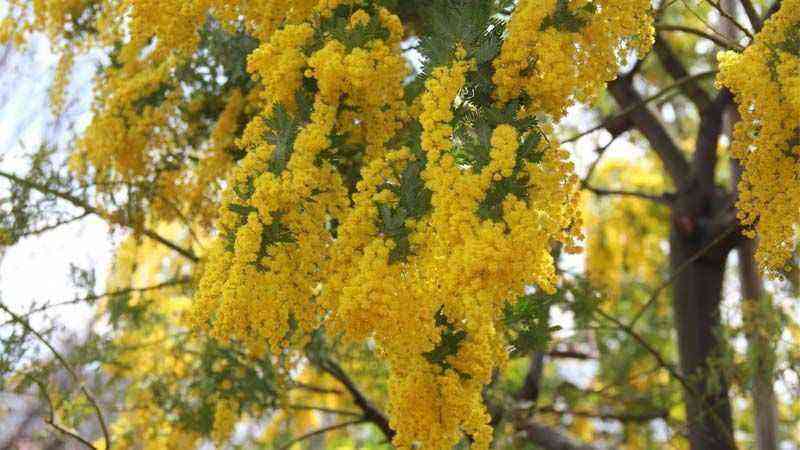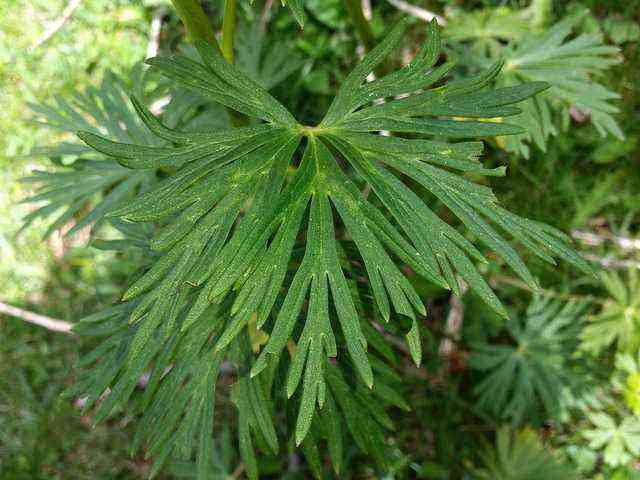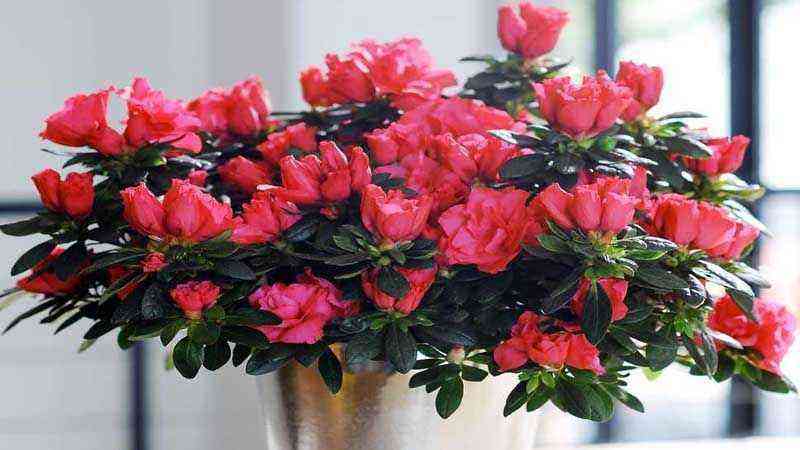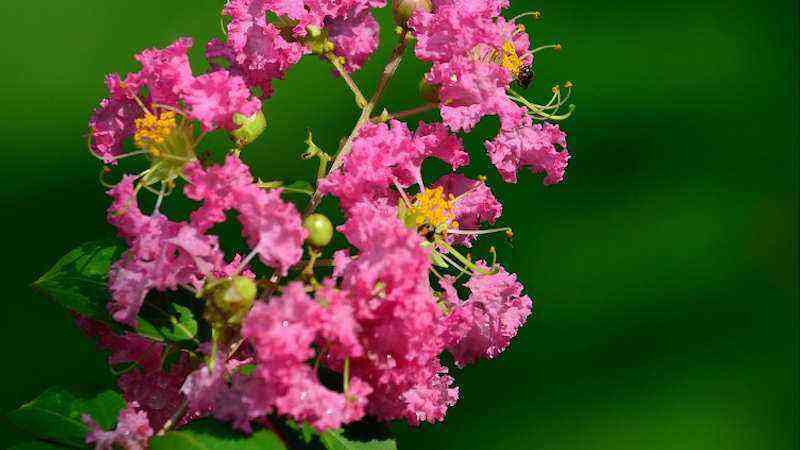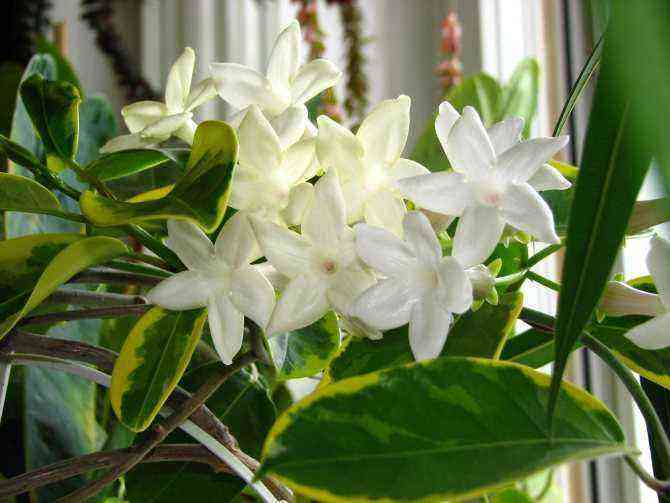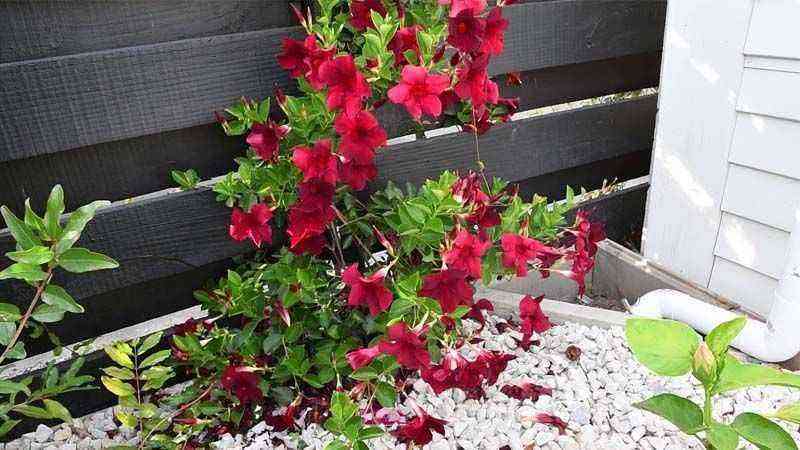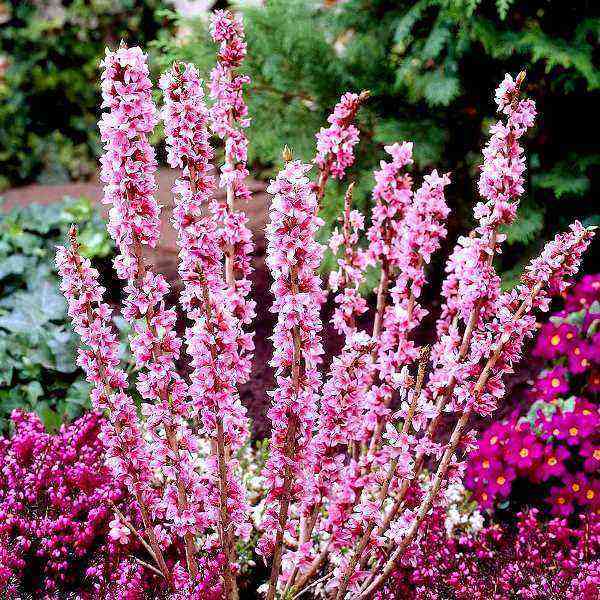If you are a beginner or an experienced florist, you should definitely have a Money Tree (Crassula Ovata) at home. It is one of the most popular indoor plants and is also a great gift for wildlife lovers.
“Crassula Ovata” Is the botanical name for the Money Tree. Almost everyone has seen these fleshy jade-colored leaves at least once and easily recognizes the tree from South Africa. The plant does not require any special care, but it is important to know what to do. Read more about this below.
Caring for the “Money Tree” after purchase
Crassula, like all succulents, can be easily grown from a cuttings or leaves – they take root within a few days. In case the plant was bought in a flower shop, you need to remember about some rules:
Important! The purchased “Money Tree” must go through an acclimatization period in the new premises.
To acclimatize, the pot is placed in its future place, slightly shading the bush, and left for two weeks. During this period, the plant is sprayed with warm water and the leaves are wiped, and watering is carried out only when it dries out strongly.- After the allotted time, adult specimens, sitting in good soil and already adapted to the changed conditions, are left in place and take due care.
- Young seedlings, half a month after purchase, should be transplanted by transferring into a more convenient pot (wide and shallow) with fresh soil. After the procedure, watering is prohibited for about 14 days, only spraying the topsoil. At the same time, the plant should create partial shade. Further, the care is carried out in the usual manner.
Preparing for planting a houseplant
If you want your Money Tree to grow happy and healthy, you need to start with the steps below.
Flower pot
The first step of the future “money” gardener is choosing the right pot. A wide, sturdy container that allows the water to drain will do. Good drainage is important to keep the roots from rotting or drowning (yes, plant roots can drown).


An ordinary flower pot with a good drainage system may be suitable for planting Crassula. Photo is used as an illustration. Source: Yandex.Images
In other words, a regular plant pot with a hole in the bottom will do. Placing the pot on a saucer will help collect the run-off water and increase the humidity around the flower.
Correct soil
You can use a special soil for Cacti and Succulents, or make your own. Just mix the all-purpose soil with sand or perlite in a 1 to 1 ratio.
Remember! Most universal soils hold moisture well – this works for most plants, but not Crassules.
Fat women grow up in hot and arid climates and simply cannot handle large amounts of water. Adding sand or perlite to the soil will allow moisture to drain off, which means your plant will not be harmed.
Reproduction and planting of a flower
Crassula is easy to propagate. This means that if you are familiar with the owner of the Money Tree, you do not have to spend money to buy a plant. Just take a stalk or leaf of a flower.
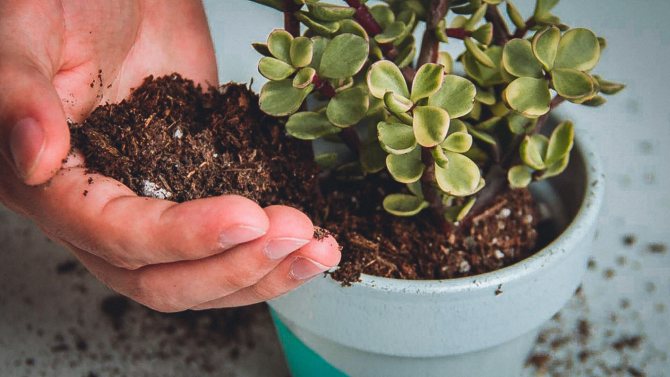
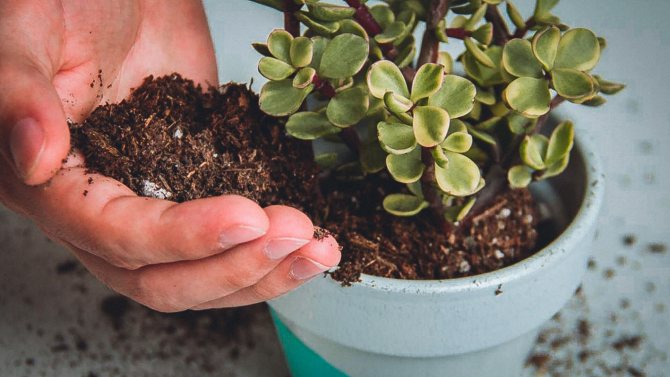
When transplanting a plant, it is important to add fresh soil. Photo is used as an illustration. Source: Yandex.Images
The main thing is to make sure that you take the shoots from a mature Crassula, as young plants cannot produce normal cuttings and leaves for germination.
Leaves
Leaf propagation is the easiest way to grow your little succulent plant. Carefully pluck the leaf from a healthy mature Crassula, making sure it looks good (smooth and dark green, no bleed).
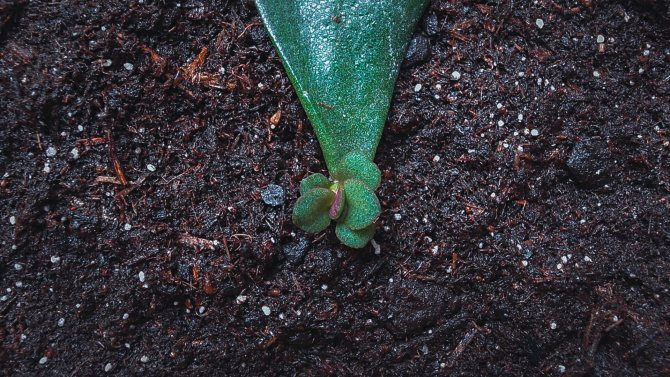

The leaf forms a new flower. Photo is used as an illustration. Source: Yandex.Images
And then just place it on moistened soil, drowning it by 2-3 millimeters. The roots should start growing from the leaf in about 2 weeks, and after another 2 weeks you will see a new flower growing from the base of the leaf.
Attention! Make sure the soil stays moist throughout the entire germination time.
Interestingly, the leaves store so much energy and potential that within a month you get a whole new plant. It’s really magical!
Cuttings
Propagation by cuttings is a similar process, but a new plant becomes an adult faster. The thicker the stem (stalk), the better. Simply cut the stem from the mother plant and place it in the soil so that it stands upright.
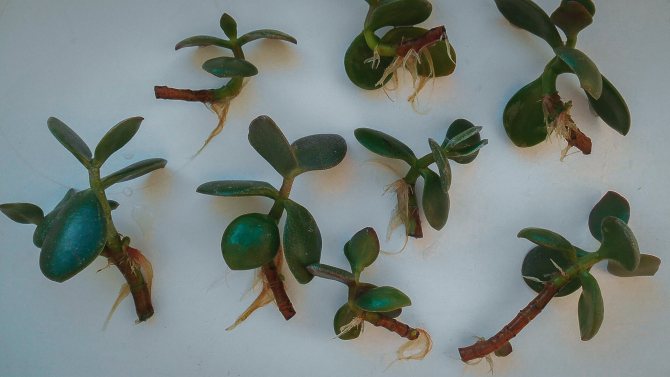
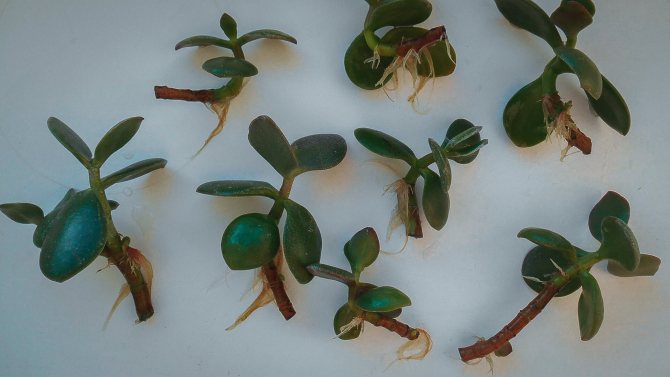
Ready cuttings. Photo is used as an illustration. Source: Yandex.Images
Once the root system is fully grown (after about 6-8 weeks), the plant should revive and you will have a real Money Tree.
Growing conditions
In room culture, “Money Tree” is not a big deal. Like all plants originating from hot and arid parts of the planet, it will respond positively to the sun, frequent changes in air masses, a regulated watering schedule and a cool dormant period in winter. Even a beginner in floriculture, who has studied its life cycle and basic requirements, can grow a healthy specimen.
Temperature conditions
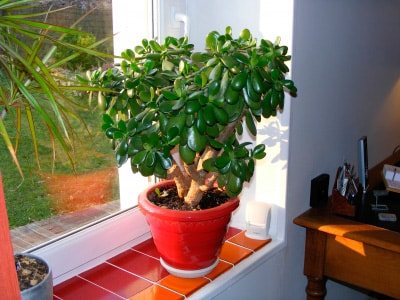
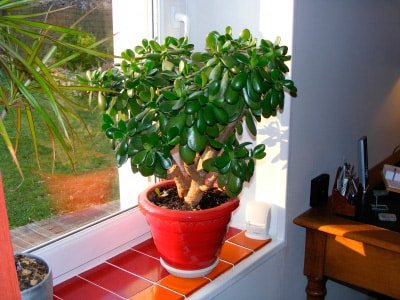
The unpretentious Crassula can adapt to various room conditions, but the ideal temperature for her ranges between 18 and 25 degrees.
At the same time, a contrast between day and night readings is absolutely necessary (within 5 – 10 degrees).
In the fall season, when the plant begins to prepare for the dormant period, the temperature should be gradually reduced. During the winter months, the thermometer should read 10-15 degrees. And the state of the tree must be constantly monitored – hypothermia must not be allowed.
If it is not possible to create winter coolness, then the “Money tree” is placed far from the heating devices and closer to the glass.
Humidity and freshness of the air

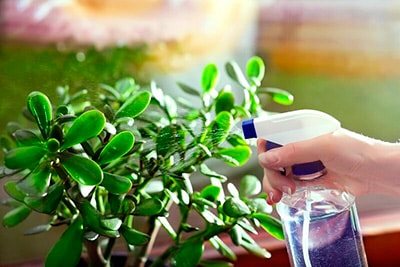
As a native of the arid zones of the earth, Crassula easily tolerates the low humidity of the apartment air.
On the contrary, it can be damaged by a humid microclimate – if such conditions arise, it is necessary to significantly reduce the amount of watering.
Spraying for the “Money Tree” is not worth it (only in order to combat spider mites), but you should regularly wipe the dust off the leaves.
In summer, the plant needs a constant change of air masses, therefore ventilation is very important, but drafts are unacceptable. It is allowed to take it out to the balcony or veranda, protecting it from direct sunlight.
Illumination

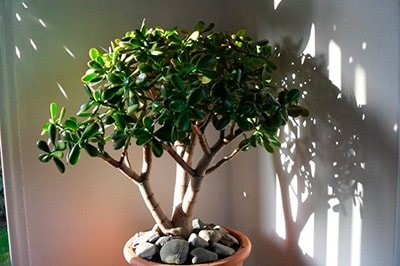
The fat woman belongs to light-loving plants, for which it is essential to receive equally bright lighting all year round.
It can be in direct sunlight, but for a short time, and if the leaves do not touch the window glass, otherwise burns are possible, which are characterized by a change in the color of the leaves to a red or brown tone.
With a lack of light, the bush loses its attractiveness. The leaves decrease in size, the branches become long and thin, sometimes they take on a drooping shape. The plant has a depressed, painful appearance. But it can be called shade-tolerant, since the tree will withstand low light for a short time.
Reference! To preserve the decorative effect of the crown and uniform all-round development of branches, it is recommended to gradually turn the “Money Tree” relative to the main source of illumination.
The need for support
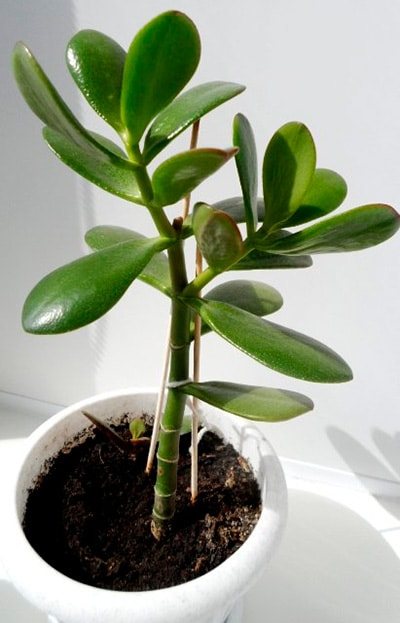
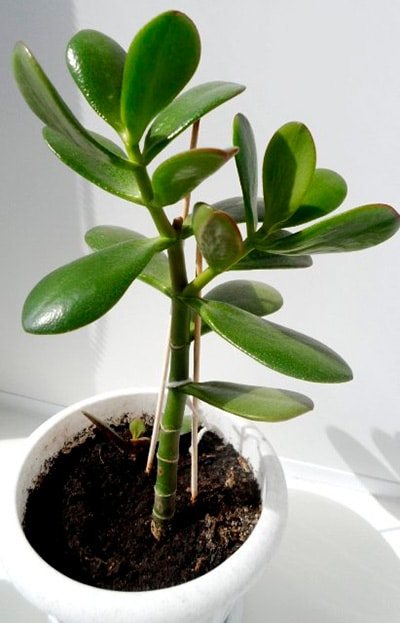
Sometimes the “Money Tree” stops growing evenly, it kind of falls over on one side. To prevent the plant from falling, the use of some kind of support is required. This state of affairs can arise for several reasons:
- Excessive watering, especially during the dormant period, does not allow the trunk to gain the necessary strength;
- Pot size discrepancy the size of the plant: the tree has grown, and the small pot does not allow the root system to develop. Transplant required;
- Incorrect crown formation leads to its heaviness – the bush does not support its own weight;
- easing due to overheating in the sun in summer.
To save the tree, it is necessary to find out and eliminate the cause. In the meantime, the plant will restore its shape, help it by equipping a support.
The best place for Crassula
As a plant that requires the maximum amount of light, “Money Tree” feels great on the sun-drenched windowsills of the southeast side of the house.
In such a location, the risk of burns from direct rays is excluded. South windows are also suitable, but shading is required on them in the summer.
Placing plants on the north or west side requires additional lighting, especially in winter.
Home care
The money tree is one of the most undemanding ornamental plants. Even inexperienced growers can take care of him.
Location and lighting
Almost all Crassula types love good lighting. It is recommended to place the flowerpot on wide sills of the southeast, southwest direction or next to them. The color of its leaves depends on how intense the light falls on the plant. If the leaves are solid green, then with an excess of sun they can turn brown. To avoid this, it is worth shading the plant with a curtain from the midday sun. Direct sunlight will not harm variegated species.
In order for the crown to develop evenly for the money tree, from time to time the flowerpot must be turned to the sun in different directions. In the summer, the culture can be taken out into the fresh air. The main thing is that she has enough light and there are no drafts.
Important! If the windows in the room only face north, then the crassula will need additional illumination with a fluorescent lamp. If this is not done, then over time, the stems will stretch out and the leaves will begin to crumble.
Choosing a flowerpot
Despite the impressive size of Crassula, its root system is superficial and rather weak. A wide pot will do, but shallow. It is better to give preference to a heavy clay container so that the tree does not overturn it. It should not be too spacious, otherwise the crassula will stretch and grow unevenly.
Ground
For planting a plant, you can buy a ready-made substrate for cacti and succulents. You can cook it yourself. It should be loose and nutritious.
Optimal soil composition:
- leafy ground (3);
- turf (1);
- sand (1).
To neutralize the acidity a little, add a little wood ash or clay to the composition. The money tree does not like acidic soil.
Planting and transplanting
The money tree does not need frequent transplants. It doesn’t like them very much. Young trees can be replanted once a year if they become cramped in the pot. For adult plants, 1 transplant in 3-4 years is enough. The procedure is best done at the end of March – in April.
Transplant algorithm:
- Remove crassula from an old pot. Examine the roots carefully.
- Cut off damaged areas with a sharp, disinfected instrument. Sprinkle the cuts with ash.
- Leave the tree for a while to dry out.
- Using the transshipment method, place the plant in a new pot, in which a layer of drainage and some fresh soil must first be placed.
- Fill the voids with soil, slightly compact it. Do not deepen the root collar.
Immediately after the purchase, the money tree should not be rushed to replant. It is necessary to give the plant time to adapt to home conditions for several weeks.
A visual step-by-step video – instructions for transplanting the Money Tree:
Content temperature
In the spring-summer period, it is recommended to keep the fat woman at a temperature of + 20-25 degrees. In summer, it is allowed to take it outside. For the winter, it is advisable to lower the temperature to +15 degrees and below. The plant can also winter in a warm room. But in such cases, leaves may fall off. Keep the flowerpot away from heating sources.
Air humidity
Air humidity does not play a big role for the development of the money tree. It is a succulent plant that is able to accumulate moisture in its parts. And when he lacks moisture, he uses up his internal reserves. The plant does not need spraying. This procedure negatively affects his appearance. For him, it is enough only to periodically ventilate the room and wipe the leaves with a damp cloth from dust. Better oxygenation occurs through clean leaves. If Crassula has to be in a humid microclimate, he just needs to reduce the number of watering.
Watering
If the money tree grows at a moderate room temperature, it is enough to water it once a week. If the room is hot – 1 times a week. You need to be guided by the state of the earthen coma. It should not dry out too much, but it should not be waterlogged either. In winter, the number of waterings is reduced to an average of 2 times a month.
Top dressing and fertilizers
You need to feed the tree only during the growing season – from May to the end of August. For the whole season, 3 dressings are enough. You can apply complex fertilizers for cacti and succulents. Liquid dressings are preferred, apply them after watering so as not to burn the roots. In winter, the plant is not fertilized.
Pruning and shaping the crown
When the tree has grown to the desired size, you can stop its growth. To do this, you do not need to transplant it into a more spacious pot, but only change the top layer of soil. To give the plant a decorative appearance, the formation of a crown is required. It is necessary to cut off the overgrown side shoots. From the severity of their weight, they can break off.
To get a neat, small tree, pruning should be started at a young age, when the stems are still soft. In adult specimens, the pinching points do not look decorative. Only after reaching the desired height of the tree, you can pinch its top with 2 top leaves. Before that, cut off only the lateral shoots. As crassula grows in places where you want to get new shoots, pinch the upper bud. Each branch must contain at least 4 pairs of leaves. If desired, you can form a bonsai.
Flowering period
The flowering of the money tree is a rare occurrence. The culture blooms, as a rule, already in adulthood and only under conditions of ideal maintenance. Flowering begins in spring and can last 2-3 months. The flowers of the plant are small, with a pinkish or greenish tinge, collected in loose umbellate inflorescences placed at the ends of the shoots. They thin the aroma intense, sweet. It is better to remove faded inflorescences so that the money tree does not waste its energy on the formation of seeds.
Fat woman in the interior


A properly formed Fat Woman looks like a small compact tree with a lignified brown trunk, the thickness of which depends on the age of the plant.
Adult specimens usually grow 1-1,5 m, but there are also much taller plants (up to 3 m).
After pinching, the branches grow strongly in width, forming a spreading crown with a large number of rounded leaves of a fleshy and plump texture. It is because of the shape of the leaf that the plant was dubbed the “Money Tree”.
The color of the leaf can be green or silver-blue. To form a beautiful crown, only one plant should grow in a pot.
It blooms very rarely in indoor culture. The first buds can be formed after 8-10 years of life.… Small, star-shaped flowers are collected in small panicles. Coloring of white, pink or yellowish color scheme.
In the interior “Money Tree” looks very impressive – a reduced copy of huge trees involuntarily attracts the eyes of guests.
3. Varieties of fat woman:
3.1. Ovate fatty woman, or Oval fat woman – Crassula ovata
An attractive evergreen tree with a strong trunk, which is often used for growing in the bonsai style. The stem is thick, covered with dark brown bark, and bears profusely branching shoots. Leaf blades are teardrop-shaped, green, glossy, often acquire a burgundy hue at the edges when grown in direct sunlight. With age, plants of this subspecies can reach a height of 3 m, but this takes them more than one decade. Variegated varieties of this bastard have green leaves in a creamy strip or very bright pink leaves. Small white star-shaped flowers are collected in large inflorescences at the tops of the stems. Oval fat women include fat Sunset – subspecies with brightly colored leaves. The main tone of the leaves is dark green, turning into orange or pink along the edge of the leaf blade. Over time, this variety develops into a large tree.
↑ Upward,
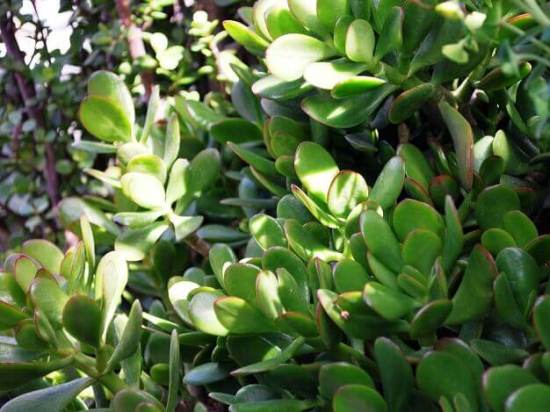
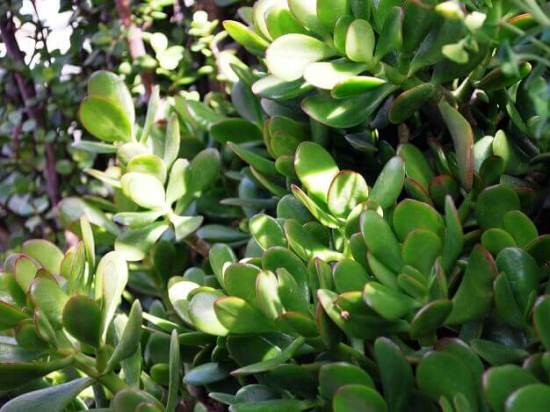
This variety also includes a tree-like Fat Woman Hobbit и Fat girl Gollum, having thick, rounded in section, fleshy leaves, collected in whorls and resembling fingers. The upper edge of the leaves is flattened or even has a depression, often painted in a burgundy or reddish tint.
↑ Upward,
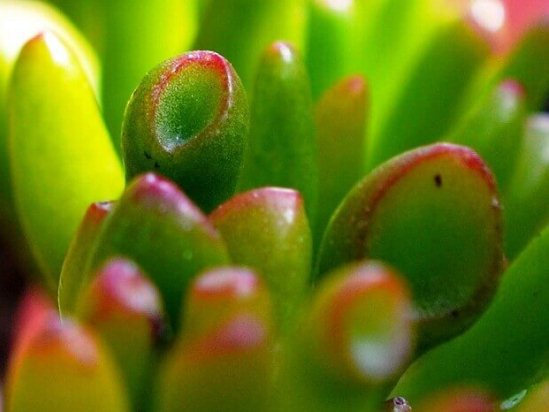

3.2.Tolstyanka Plaunovidnaya or mshistaya – Crassula lycopodioides
Evergreen succulent shrub up to 40 cm high with a very distinctive appearance. When looking at this plant, it is impossible to attribute it to the genus Fatty. The bush has thin, irregularly curved, abundantly branched green shoots, densely covered with small, light green or bluish leaves resembling needles. With age, the stems become lignified and covered with brown bark. The flowers are small, greenish-yellow, solitary or collected in few-flowered inflorescences.
↑ Upward,
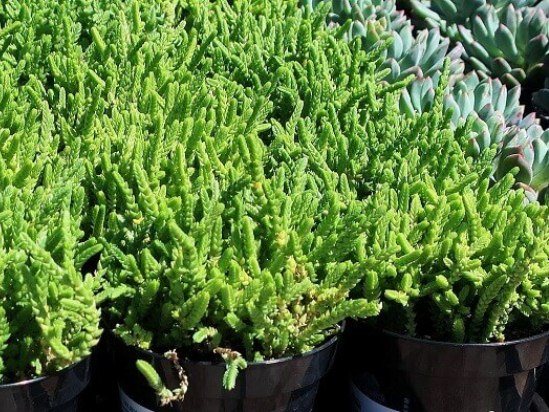
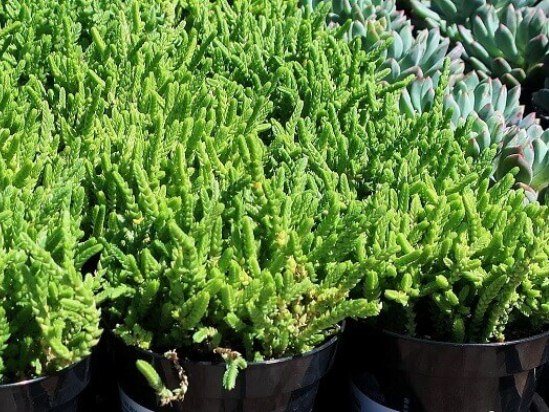
Cartula portulacea – Crassula portulacea
It resembles the above-described view – ovoid bastard. With age, it turns into a beautiful tree with a compact crown of abundantly branching branches with dark green, tear-shaped, glossy leaves. Reaches a height of 2 m, flowers are white or pink, small, but the flowering is very abundant and long.
↑ Upward,
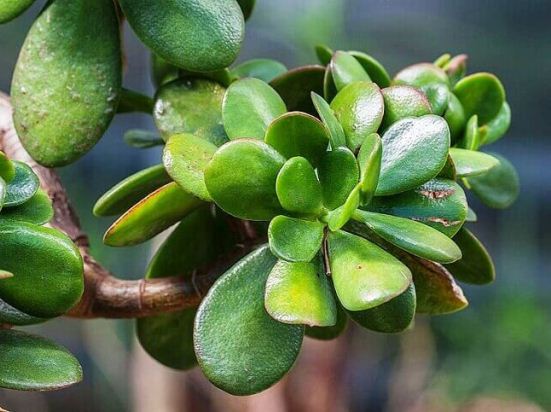
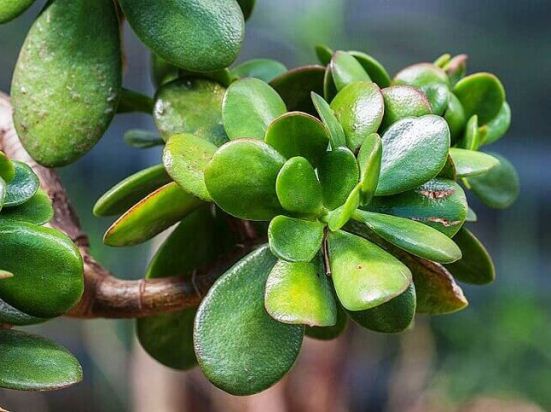
3.4. Fatty pierced or Nile – Crassula perforata, Crassula nealeana
An unusually beautiful subspecies with erect, unbranched shoots, densely covered with triangular green or burgundy pairs of sessile leaves, reaches a height of 45 cm. Flowers are pale yellow, small, attractive leaves are the main value.
↑ Upward,
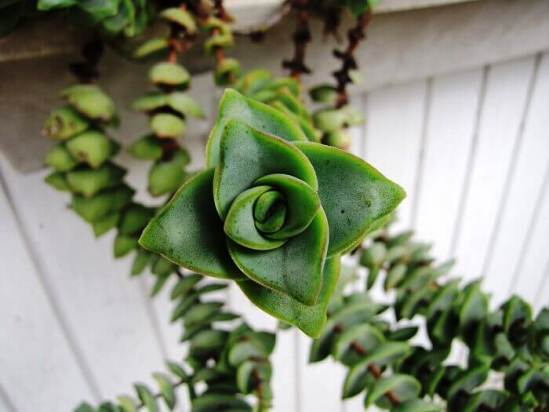
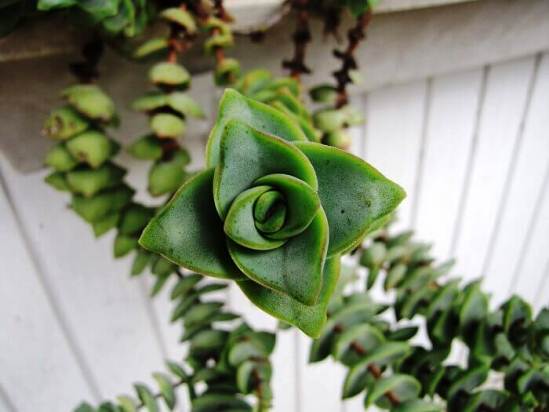
3.5 Crassula Schmidtii
Unlike previous species, this gorgeous plant can be classified as decorative flowering. One of the smallest species – it reaches only 20 cm in height. Stems branched at the base, light brown, contrasting well with dark green, oblong leaves. The leaves are thick, fleshy, oblong – triangular in shape, the upper surface has small depressions. During the flowering period, small inflorescences appear at the ends of the stems – umbrellas with bright, pink, bell-shaped flowers that do not exceed 5 mm. in diameter. There are plants with white flowers. Flowering is profuse and long lasting.
↑ Upward,

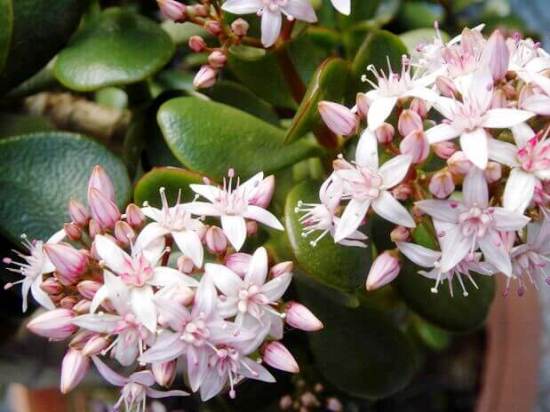
3.6 Crassula rupestris – Crassula rupestris
It resembles a pierced fat woman – the low erect stems of this species are densely covered with green or pinkish-yellow, thick, juicy leaves, as if strung on a string with beads. The leaves are triangular or rounded, have a smoother outline, in contrast to the pierced bastard, often covered with a waxy bluish bloom. Plants reach a height of 50 cm. During the flowering period, the plant throws out inflorescences – umbrellas in white small flowers.
↑ Upward,
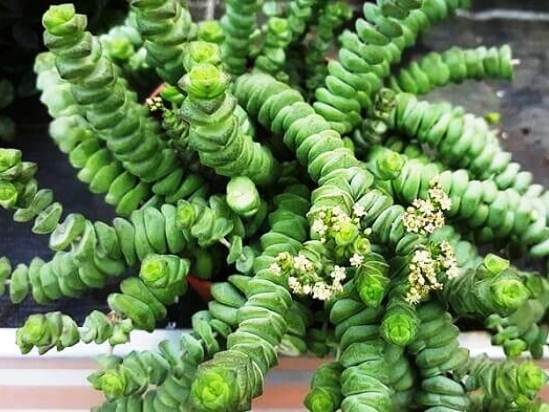

3.7.Ticky crescent – Crassula Falcata
Evergreen succulent shrub that forms a short and thick stem with age. The main distinguishing feature of this species are large bluish-green or gray, sessile leaves, arranged in pairs, as if emerging from each other. The plant can be attributed to both decorative leafy and flowering. During the flowering period, the crescent-shaped fat woman forms a large inflorescence – an umbrella on a low, strong peduncle. The flowers are small, pink or salmon, have an attractive aroma, long flowering. The height of the plants varies and is 60 – 120 cm.
↑ Upward,

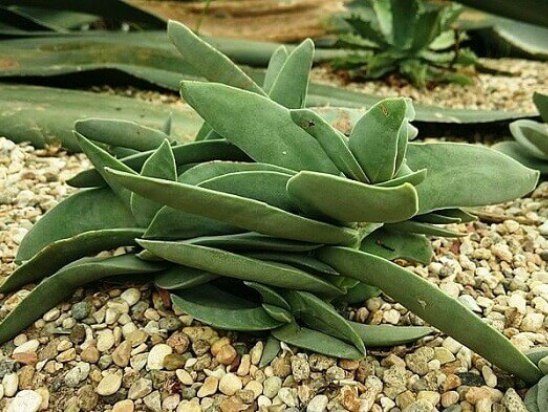
3.8.Tholstyanka carpet – Crassula socialis
Miniature evergreen perennial up to 6 cm high during flowering and less during the rest of the year. Over time, plants form dense grassy mats. The leaves are juicy, thick, light green, triangular, reaching a length of 4 – 6 mm. and tightly cover the stems of the plant. When grown under the scorching rays of the sun, the leaves can turn pinkish in color. During the flowering period, which occurs mainly in late summer – autumn, vertical, leafless peduncles form on the tops of the stems. At the tops of the peduncles there are small branched inflorescences with small, white flowers.
↑ Upward,
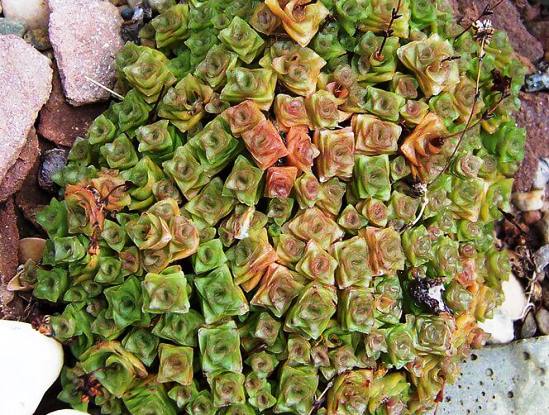
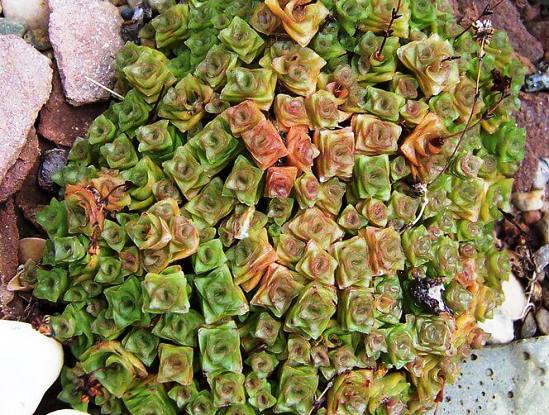
3.9. Crassula spot – Crassula picturata
Spectacular decorative-leaved succulent with strong, erect, branched shoots at the base. Leaves are thick, sessile, cordate or lanceolate, often covered with slight pubescence, arranged in opposite pairs. The leaf blades are light green, velvety, with small, dark specks and a thin border along the edge. With prolonged exposure to the sun, the leaves turn pinkish. Small apical inflorescences appear during the warmer months and consist of small, pinkish or white flowers.
↑ Upward,


3.10.Tolстянка Helssa – Crassula helmsii
Herbaceous succulent perennial plant with rounded, lodging stems about 1 mm thick, up to 130 cm long.The leaves are juicy, thick, needle-like, reminiscent of needles, light green in color, reaching a length of 2,5 cm.During the flowering period, the plants form small, inconspicuous, axillary, white flowers with 4 pointed petals.
↑ Upward,

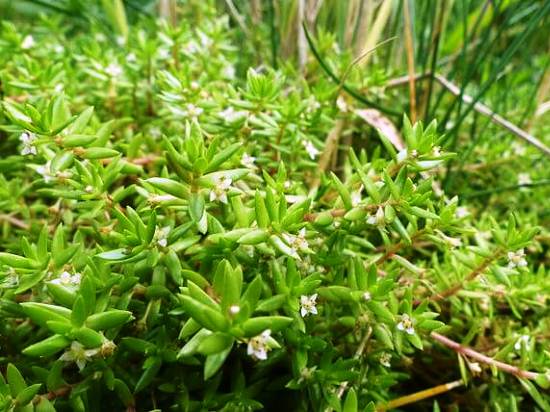
3.11.Milford’s fat woman – Crassula milfordiae
An evergreen groundcover succulent that forms thick, grassy rugs that resemble saxifrage. Stems are thick, creeping, profusely branched at the base. Leaves are sessile, light green, burgundy, pink or covered with a bluish bloom, collected in whorls, often with a slight attractive pubescence on the surface. The leaf blades are triangular. In the summer months, the plants adorn themselves with strong, erect, thick peduncles with inflorescences – umbrellas at the top. Each umbrella consists of several white or pink, small, delicate flowers.
↑ Upward,


3.12.Tolstyanka voylochnaya – Crassula tomentosa
A miniature biennial or perennial plant with leafy rosettes consisting of glossy, green leaves covered with rich silvery pubescence. The leaf blades are rounded, reaching a diameter of 3 – 10 cm. During the flowering period, the plants form a thick, erect, unbranched stem 10 – 60 cm high, on which the leaves are arranged in opposite pairs. At this moment, the plants often resemble a children’s toy – a pyramid, since the higher the leaves are, the smaller they are. Each rosette is capable of blooming only 1 time – then it dies, leaving numerous offspring around it.
↑ Upward,


3.13 Crassula lactea
Perennial succulent plants with thick, branched, succulent, brown stems up to 40 cm high. The leaves are light green or bluish green, sessile, heart-shaped, arranged in opposite pairs, when grown in direct sunlight, they can acquire a bronze or slightly pinkish tint. An interesting feature of the plant is the presence of small, white dots along the edge on the leaves. This variety blooms very profusely. Short, strong flower stalks appear at the tops of the shoots and bear inflorescences – umbrellas, consisting of numerous white or pinkish flowers.
↑ Upward,
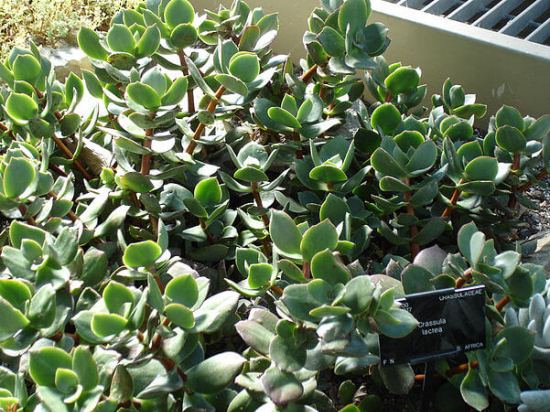

3.14.Tолстянка Марнье – Crassula marnieriana
Extremely attractive ornamental-leaved plants with thick, branching, branched at the base, erect or lodging stems. This plant can be used both as a spectacular ground cover and as an ampelous specimen, growing in a hanging planter. Leaves are light green or bluish, very thick, juicy, sessile, broadly triangular, densely covering the stems. With prolonged exposure to the sun, the ribs of the leaves are painted in a bright burgundy or pinkish hue, which gives the plant additional attractiveness. In the summer months, short peduncles appear at the tops of the shoots, at the top of which there are small inflorescences with many pinkish flowers.
↑ Upward,


3.15 Crassula ‘Morgan’s Beauty
Bright, compact beauty up to 10 – 30 cm high. The low, powerful stems of this plant bear wide – triangular, thick, succulent leaves. The leaf blades are green, covered with a thick, silvery – blue bloom. The flowers are bright pink or crimson, collected in large, rounded umbrellas, contrasting well with the foliage.
↑ Upward,

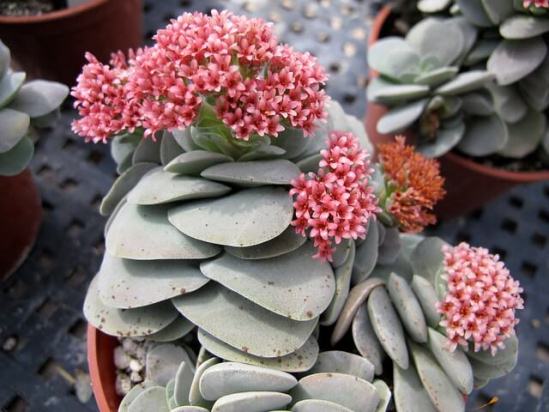
3.16.Крассула Ундулатифолия — Crassula arborescens subsp. undulatifolia
Tall succulents with thick, branching shoots that woody with age and are covered with light brown bark. Leaves are bluish or light green, oval, on short petioles, arranged in opposite pairs. The leaf blades are entire, have a beautifully curved shape, due to which the plant appears curly. With age, this species is able to reach a height of about 2 m, but it develops slowly. White or pink, attractive flowers are collected in apical umbrellas.
↑ Upward,

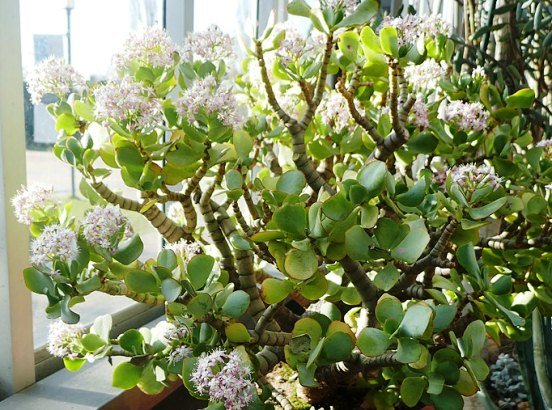
3.17.Tолстянка голостебельная – Kassel
The erect stems of this plant are bright brown and covered with many thick, succulent leaves. Leaves are light green, sessile, thick – almost rounded in cross section, narrow – lanceolate. The leaf blades are often painted in a bright burgundy hue. The flowers are small, inconspicuous, greenish or creamy, always half-closed.
↑ Upward,


3.18.Crassula pyramidal – Crassula pyramidalis
A spectacular representative of fat women with thick, stems, which in mature plants branch out at the top and form a lush crown. The leaves are glossy, green, triangular, reaching a length of 8 mm., So densely arranged that they create the appearance of tetrahedral, thick stems. Inflorescences are apical, close to the stems and consist of small salmon, white or pink flowers.
↑ Upward,
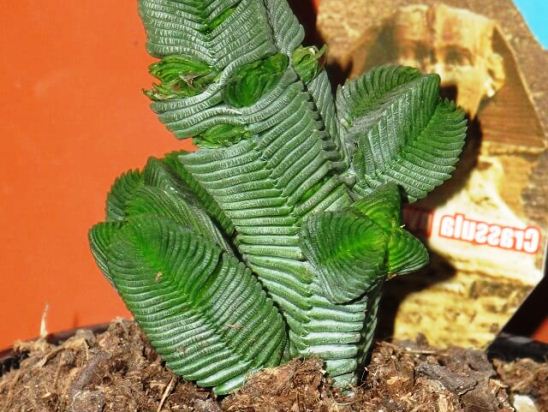

Flowering conditions
The flowering of the “Money Tree” directly depends on the growing conditions:
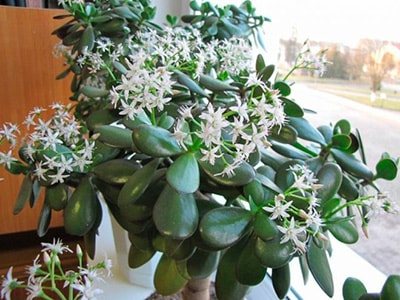

In the natural environment, it blooms at the beginning of the growing season – in the spring. Tiny stars of fragrant flowers with five petals make up the inflorescences in the form of a brush or panicle. White and pink shades prevail.- In the natural environment, plants bloom that have reached an adult state (8 – 15 years), and at home this age is even more solid – around 20 years old, subject to constant compliance with all the rules of care.
- Flowering in indoor culture is extremely rare and not in every plant. Flowering period – winter months (very rarely – spring)… Inflorescences ripen on young shoots. The cooler it is indoors, the longer the flowering period (up to 3 months).
- In the home culture, the “Money Tree” of the proper age forms buds after prolonged or short-term stress: the cessation of watering for a month or a sharp change in temperature. Return to normal conditions may produce flowering. But you can also destroy the plant (dry or freeze).
- After the first home flowering, this process can be repeated annually, but five-year intervals are also possible.
Methods of reproduction
There are several ways to propagate a fat woman. The choice of the appropriate option depends on the purpose and expectations of the grower. Each method has its own characteristics, therefore, it requires a clear definition and detailed explanation of the actions.
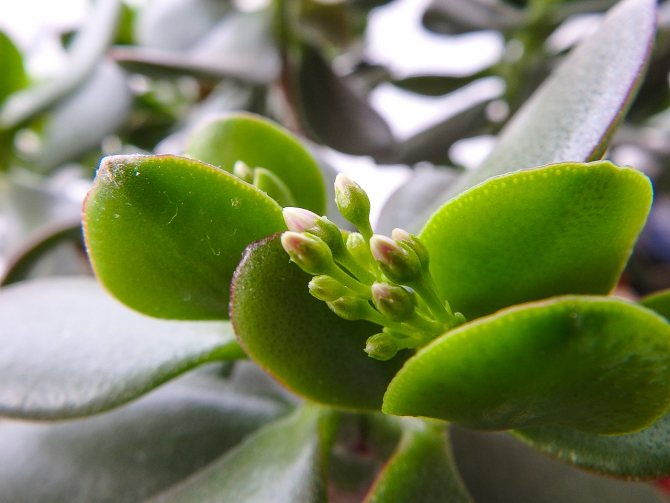
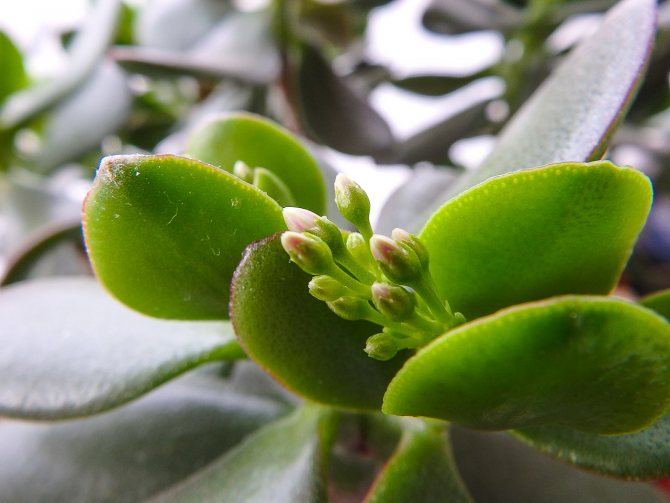
Cuttings and leaf
The easiest way to divide the money tree, especially if it is necessary to preserve all the characteristics of the variety. With the help of cuttings, you can quickly grow a young, but already grown plant at home. Breeding material can be taken at any time of the year. Young shoots remaining after crown formation, small shoots that have taken root from the leaf will take root well.
Cuttings for reproduction can only be healthy, well-developed shoots. Curved, thin twigs will not work, since the growing tree will take the same shape. A 5-10 cm stalk with at least 3 nodes and 3 pairs of leaves is considered a good material. Cut it off from the top or from the stem. For rooting, a part of the plant is placed in water. Processing with special means to speed up the process is not required.


Removing a money tree from a leaf is a long process, but real. Roots form quickly, which cannot be said about the sprout itself. A dense green leaf is suitable for dividing in this way. It is better to shoot material from the middle of the branch. After cutting, the leaf is placed in water or directly into the ground. It should just be on the surface in a horizontal position. The base of the sheet should be immersed in the substance by 5 mm.
Seeds
Reproduction by seed is rarely carried out. This is due to the long process of plant formation, high time and labor costs. This method is used by breeders to grow new varieties, hybrids. At home, planting and caring for the seeds of the money tree is carried out as follows:
- Small containers wash and disinfect well;
- Fill them with potting soil;
- Seeds are poured onto the surface of the leafy ground and sprinkled with sand;
- Sprinkle with water from a spray bottle and cover with glass or film;
- After 2-3 weeks, the first shoots appear;
- For seedlings, other pots with sod-leafy soil are prepared;
- When the plants grow up to 5 cm, they are transferred to light soil, placed in a place with a constant temperature of 15-18 ° C.

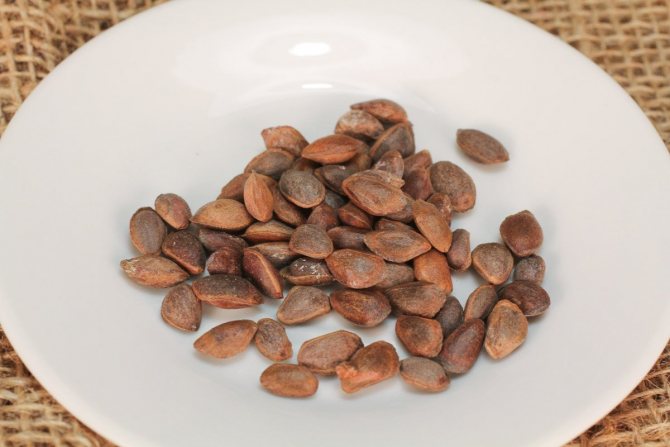
Transfer
The money tree has a negative attitude towards such a procedure as transplanting. Therefore, this event is carried out only if absolutely necessary, with extreme caution.


Young seedlings should be replanted regularly in the spring as they grow quickly and require a larger pot. Purchased plants should also be transplanted in order to improve the soil and vessel, but only after a period of acclimatization in a new place (2 weeks). Adult trees are subjected to this procedure as they grow, but not more often than after 3 years.- The transplant is carried out at the beginning of the growing season, that is, in the spring. Due to the strong fragility of the branches and the weak, fragile root system, the procedure is carried out using transshipment methods: the plant is carefully removed from the old pot and, together with a lump of earth on the roots, is transferred to a new vessel, then fresh soil is poured in and slightly compacted at the edges.
- For better adaptation of the tree in the new soil, the trunk should not be too deep – the surface of the earth should remain at the same level so that the root collar is not damaged.
- Since the soil gradually deteriorates, it must be changed from time to time completely. To do this, the roots are carefully cleaned from the ground, examined and cut if necessary (all sections are treated with activated carbon) and placed in a new substrate. After transplanting, they water it and put it in a cool place for a week or two.
Attention! “Money tree ”is characterized by a weak root system, which does not correspond to a voluminous crown. Therefore, when transplanting, it is necessary to choose a wide, weighty pot with a stable bottom and fill it with heavy drainage pebbles. This will prevent the plant from rolling over and breaking.
general description
The genus Crassula has more than 350 species in nature, differing in a variety of shapes and colors. Many of them belong to the leaf succulents of the Tolstyankovye family. Succulents (succulentus – succulent) are plants that can control their metabolic processes and accumulate water in leaves and stems to protect themselves from the variability of weather conditions. The dense glossy surface of the sheet restrains the evaporation of moisture during drought.
They chose both tropical and the driest places of the planet Earth as their habitat. They can be found in the south of the Arabian Peninsula, in Madagascar, they grow in huge numbers in South Africa. The more extreme the living conditions, the more original their form, the more fantastic the color and the more exotic the flower.
“Crassula” is Latin for “thick”, which corresponds to the appearance: its leaves are fleshy and thick. There are annual and perennial species, herbaceous and tree-like forms.
All types are conventionally divided into two groups:
In indoor floriculture, the most common types are divided into 3 groups:
- Tree-like;
- Groundcover (creeping);
- Columnar (spike-shaped).
The tree-like crassula looks like a tree with a trunk and branches. The shape of the leaves, reminiscent of a coin, gave rise to calling the fat woman with similar words in different countries:
- “Coin Tree”;
- “Money Tree”;
- “Silver Tree”;
- “Tree of Happiness”.
It is believed to bring prosperity, success, wealth and good luck in financial affairs.
This group brings together the most popular types of fat women, which they have become, thanks to their original appearance and their unpretentiousness. The arrangement of slightly dissected leaves on the stem is opposite. Flowers of small different shades, collected in inflorescences, differing in shape, the number of petals and stamens in the flower is the same. The triangular shape of the leaves differs from the money tree, the bushy bushy Spring Time.
Miniature trees with a magnificent crown and a thick stem, which are easy to care for, will be a worthy decoration for any interior.

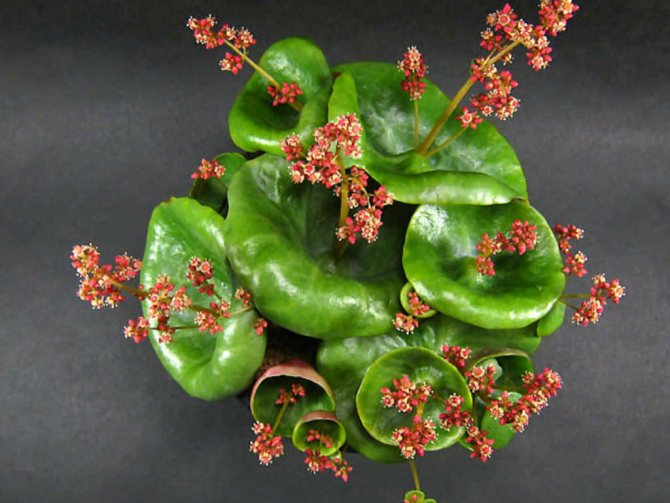
A flower listed in the Red Book of the Republic of South Africa
A rare species of treelike crassula – Crassula umbella (or umbrella), found in a very limited territory of the Republic of South Africa, is even listed in the Red Book of the state. It is a small succulent plant with a stem height of up to 25 cm. The leaves are obovate with one or two pairs of adjacent leaves merge to form an umbrella. Their color ranges from yellowish-green to red. In nature, it sheds leaves during a summer drought. Flowering is observed in the winter-spring period.
Landing
If you want to grow the “Money Tree” yourself, you can use two planting methods:
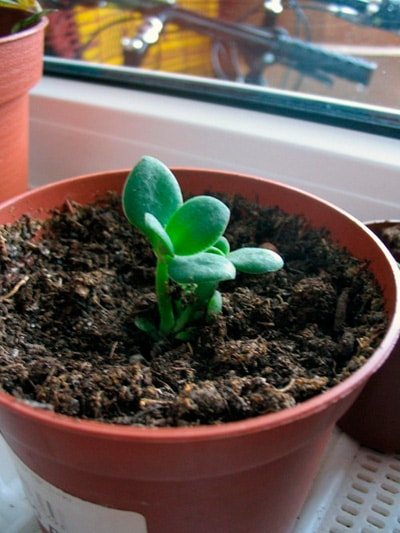
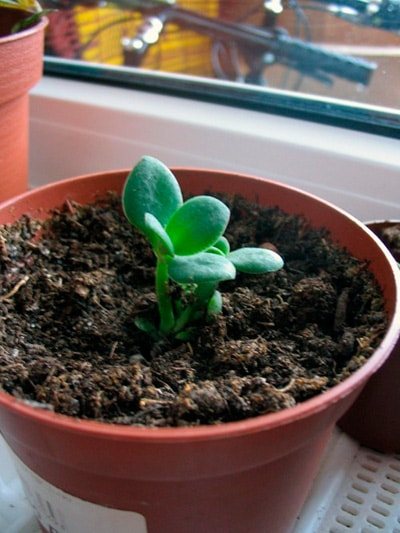
Planting a plant with seeds. Use small, wide pots with good drainage holes. Seeds are placed in them, lightly sprinkled with earth, and a semblance of a greenhouse is created using a transparent vessel. Seeds require daily airing and moistening of the soil. After half a month, sprouts may appear.- Planting by cuttings. A twig is cut off from an adult plant and placed in water. After root formation, the cutting can be planted in cactus soil or in ordinary soil. The stalk will also take root when planting directly into the ground.
Reproduction
“Money Tree! most often propagated by cuttings – leaf or stem. The operation is carried out in the spring, but with a strong desire to grow the talisman, you can cut it at other times of the year. Use the apical shoots and dry them slightly (2 days). The finished material is planted in loose soil and periodically moistened. Rooting takes place for three months.
A faster way is to root the cuttings in water, followed by timely planting. In this variant, the roots are formed earlier, especially in bright light.
Sometimes broken leaves take root on the ground on their own. Then all that remains is to transplant them.
Seed propagation is used much less frequently. It involves the use of a greenhouse and double picking of seedlings. Sprouts appear in 10 – 14 days.


Crown formation
To give the Fat Woman the shape of a tree, it is necessary to engage in the formation of the crown. This is a very responsible and lengthy process that allows you to achieve the decorative effect of the “Money Tree”. An exception to this is T. treelike, which itself forms its own tree contour.
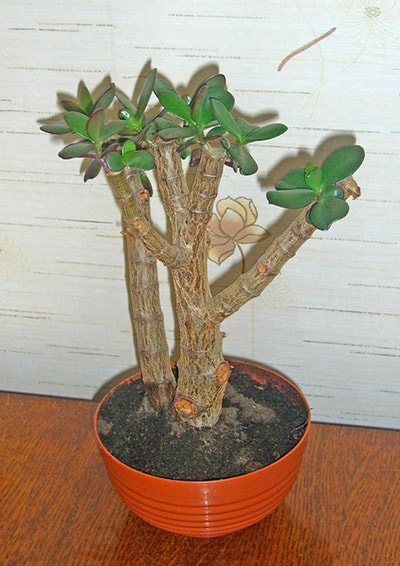

You need to start creating a crown from the beginning of plant growth. At the first stage, alle lateral branches until the bush grows to the desired height. The condition for the first step is that half of the trunk must be bare.- The second stage of tree formation can be considered pinching the top growth point. At the same time, lateral buds wake up, the shoots of which will form the basis of the crown. During this period, it is necessary to start turning the plant relative to the light, otherwise the crown will turn out to be one-sided.
- Further is creating the contour of the crown. In all lateral shoots, after the formation of the fourth pair of leaves, the upper buds are removed for greater branching. The longest branches are cut to prevent loosening and shading. Slices tighten themselves, but ideally, it is advisable to form the formation only by pinching. Direct the branches up.
- If it is necessary to remove an already formed adult branch, the cut is treated with activated carbon. Such pruning is needed to free the middle part of the crown.
- It is necessary to form the crown constantly as the “Money Tree” grows. Pruning is done over the brown rings on the trunk (leaf scar). The tree transfers all the activities for creating the crown calmly and grows even more actively. But between pruning, the plant must rest.
- The condition for obtaining a beautiful tree shape is the presence of only one seedling or cutting in the pot.
- To give the trunk thickness, pinch all young shoots.
How to breed a money tree
At home, the fat woman is propagated only vegetatively – by cuttings. There are the following types of cuttings: apical and leaf. How to breed a fat woman:
- Upper cuttings can be obtained by pruning the plant in early spring. They are cut from the top of the powerful shoots. It is not recommended to use weak and elongated shoots for harvesting cuttings. Cuttings up to 15 cm long are dried for several hours. Then they are put on rooting in water or immediately dropped into the ground. Cuttings planted in the ground are covered with a jar or glass. After the cuttings have taken root in the water, they are planted in the soil for fat women;
- Leafy cuttings only large-leaved species are propagated. Treelike varieties reproduce well with leaves, which are placed for rooting in water or directly into the ground. Large and green leaves are chosen for rooting. Young or very old leaves cannot take root. As soon as the rooted stalk grows to a size of 20-25 cm, pinch its top. After that, the fat woman begins to branch, lets out lateral shoots, from which the branches of the crown are formed.
Further, every spring, before the start of growth, a formative pruning of the tree is done. The lower branches are removed to form a stem. The upper part is grown in the form of a crown, shortening branches that are too long. Also, weak and dry shoots are removed from the crown, branches growing inside the crown are removed.
A fat woman is transplanted every 2-3 years. Young plants need replanting annually.
Mature plants are transplanted immediately after the end of the dormant period. This is done by transferring to a larger pot. The pot should not be too spacious. The root system of the bastard is superficial, it cannot quickly master the entire earthen lump. And the undeveloped land turns sour, fungi and bacteria multiply in it.
For a fat woman, a shallow ceramic pot is suitable. Drainage is laid at its bottom, and then a layer of soil is poured. The plant is transferred into a new flowerpot, the empty places are filled with earth. After transplanting, the plant is not watered for 2-3 days.
Watering mode
In the warm season, the Tolstyanka needs regular, but very moderate watering. The soil in the pot should dry at least half between waterings. Abundant moisture threatens rotting of the root system and possible death of the plant. Therefore, the flowerpot should be kept in the pallet and the excess liquid should be drained.
Water for irrigation is taken from settled and warm.
Feature! A “money tree” without watering can be for quite a long time – it is more afraid of waterlogging than drying out.
When providing the “Money Tree” with a winter dormant period, watering is canceled, since the plant has enough moisture accumulated in the leaves. If the soil is very dry, it can only be slightly moistened (once every two weeks) to prevent the roots from drying out.
With a warm content in winter, watering is carried out according to the summer principle – depending on the temperatures and drying of the soil (twice a week).
It is not required to spray the plant either in summer or in winter. But wiping the leaves from dust with a damp sponge is helpful.
Additional fertilizing
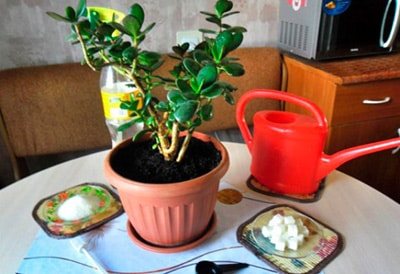

At home, “Money Tree” grows on soils that are not very rich in nutrients. Therefore, it does not like frequent feeding.
During the growing season, it is enough to fertilize the soil once a month. In case of cold wintering, the use of dressings is reduced to naught.
The main rules for feeding:
- Apply fertilizer after watering to protect the roots from burns;
- You can not apply fertilizer to transplanted and diseased specimens – this can lead to the death of the plant.
As top dressing “Money Tree” use standard fertilizers for cacti or alternate between conventional mineral fertilizers and organic matter.
Pruning and pinching
Many people like to prune their Crassulae to give them an attractive look. In other words, pruning is done for aesthetic reasons, but also helps the plant develop thicker stems. The main recommendations here are:
- do not cut more than 30% of the jade branches at one time;
- do not touch the main stem (trunk) of the plant;
- make sure you use cuttings for propagation;
The thicker stems allow the Fat Woman to grow tall and fleshy, which makes them look really cool. The main thing is to prune the plant at a mature age.
Diseases and pests
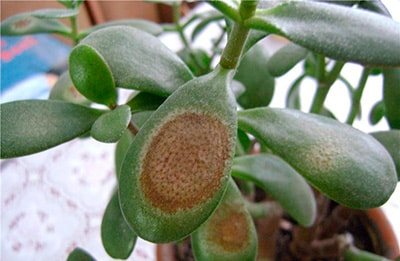

The “money tree” is quite resistant to diseases and pests.
All diseases that can nevertheless affect the plant come from non-compliance with the rules of care:
- Various rot – violation of the watering schedule;
- Falling leaves – too abundant watering of the “Money Tree” or overheating during the winter dormancy;
- Shriveled leaves – when the roots dry out or a small amount of light;
- Spots of light shades on the leaves – sunburns.
Pests rarely infect the “Money Tree” because of the arsenic contained in the leaves. In addition, a healthy plant itself can cope with parasites. If the content is incorrect, the appearance of a spider mite, scale insects, aphids and mealybugs is possible. To eliminate them, treatment with acaricides or insecticides is required.
How to reanimate?
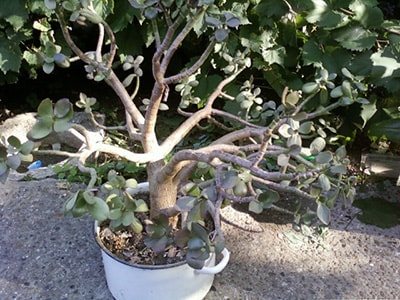
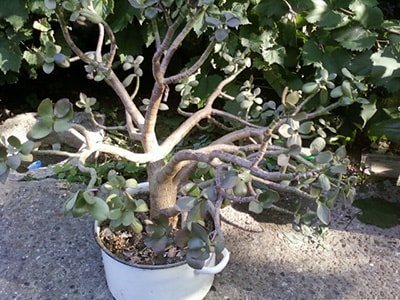
The peculiarities of the “Money Tree” as a succulent plant make it possible to avoid the death of damaged specimens.
When shedding foliage, loss of turgor, pulling branches and other problems associated with improper care, it is enough to remove the damaged areas.
It is necessary to create comfortable conditions for the plant to return to its original appearance.
But if root rot is found on the “Money tree”, drastic measures are required to revive it. The infected roots are removed from the plant, treated with an antiseptic and transplanted into new soil. If all the roots have died, then the top of the tree is cut off and rooted, as in grafting. This is the only way to save the plant.
The most common mistakes when growing


The “money tree” is very unpretentious and does not take much time to care for. But newbies, out of inexperience, sometimes have problems, and they have to overcome the consequences of their mistakes:
- Refusal to form a contour or the creation of a one-sided crown (they did not turn the plant relative to the light) – this can lead to the overturning of the bush due to the heavy crown.
- Watering too often – leads to the formation of root rot, leaf fall and even death of the tree.
- Incorrect placement in the room – lack of light threatens with stretching of branches, crushing of leaves and loss of decorativeness; direct rays of the sun oppress the plant due to overheating and burn the leaves.
- Insufficient soil moisture – leads to drying out of the root system.
- Top dressing without preliminary watering – will cause burns on the roots.
- Feeding a sick or transplanted plant – oversaturation of nutrients, soreness and loss of appearance.
- Transplanting “Money Tree” immediately after purchase – the plant does not undergo adaptation and slows down growth and development.
Answers to popular questions
When will the “Money Tree” bloom?
Only mature trees are ready for flowering – this can happen in 10 – 20 years. In addition, the plant needs a period of winter dormancy to form flowers, and sometimes a little stress in the form of drought or shade. And not all Fat women bloom in room culture.
How long does a tree live?
Under natural conditions, the plant lives for decades and reaches considerable sizes. In the apartment “Money tree” entirely depends on the care and love of the grower – in comfortable conditions it can be passed on through several generations.
The tree is withering. Why and what to do?
It is quite obvious that the plant was watered too often, and the root system died from waterlogging. It is necessary to make cuttings from the healthy part of the crown and grow new trees. Be sure to adjust their watering schedule.
The Money Tree is said to be poisonous. Is it true?
Indeed, in nature, Fat women can accumulate a sufficient amount of arsenic in the leaves. But a cultivated tree does not have such an opportunity, since the land in which it grows does not contain this poison. The plant is safe for children and animals.
Caution! Do not use the leaves of the wild-growing “Money Tree” inside – they contain poison.
Does the tree have medicinal properties?
Even in ancient China, the leaves of the “Money Tree” were used to treat abscesses, wounds and insect bites – the plant has anti-inflammatory properties. They can cure sore throat, it helps with kidney disease.
In addition, the tree has a strong connection with the owners of the house: if a family member falls ill, the plant wilts and loses its external shine. When a person recovers, the plant soon returns decorativeness.
You need to go on a business trip for a month. How do I leave the tree?
There is a rule regarding watering “Money Tree”: it is better to dry out than flood. The plant should be watered before leaving, mulch the soil and put the flowerpot away from the window. In this state, it will feel great all month long.
Why can’t you form a round crown?
It is necessary to form the crown gradually, pinching the prominent branches. To prevent the crown from being one-sided, the plant must be turned from time to time relative to the light source. All branches will receive the same lighting and will start developing in sync.
Facts about the Oval or Egg-shaped Crassula Ovata
The money tree or Crassula Ovata has curved and oval leaves, usually growing upward. In general, there are more than 600 types of Fat women, some are very rare and expensive. And some are affordable and very beautiful, such as The Hobbit, Gollum, Minor, Sunset and other varieties of the flower.

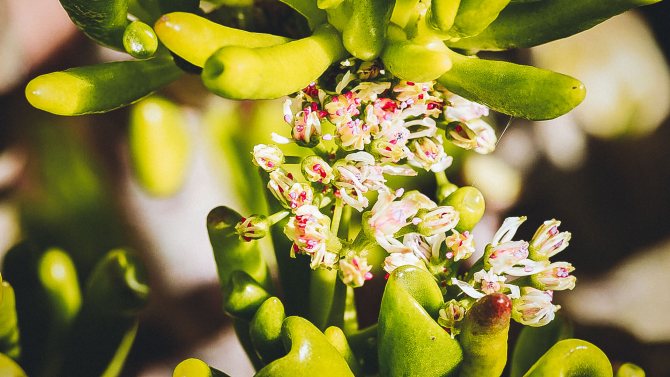
Unusual variety Gollum. Photo is used as an illustration. Source: Yandex.Images
The tree is a great addition to any interior, suitable for growing in the bonsai style and creating a small home garden. But there is a flip side to the coin, and sometimes this succulent can create problems.
The fact is that it is a poisonous plant. For an adult, the poison is practically harmless, but it has a strong effect on small children and pets. We advise you to keep the flower away from children and pets.
